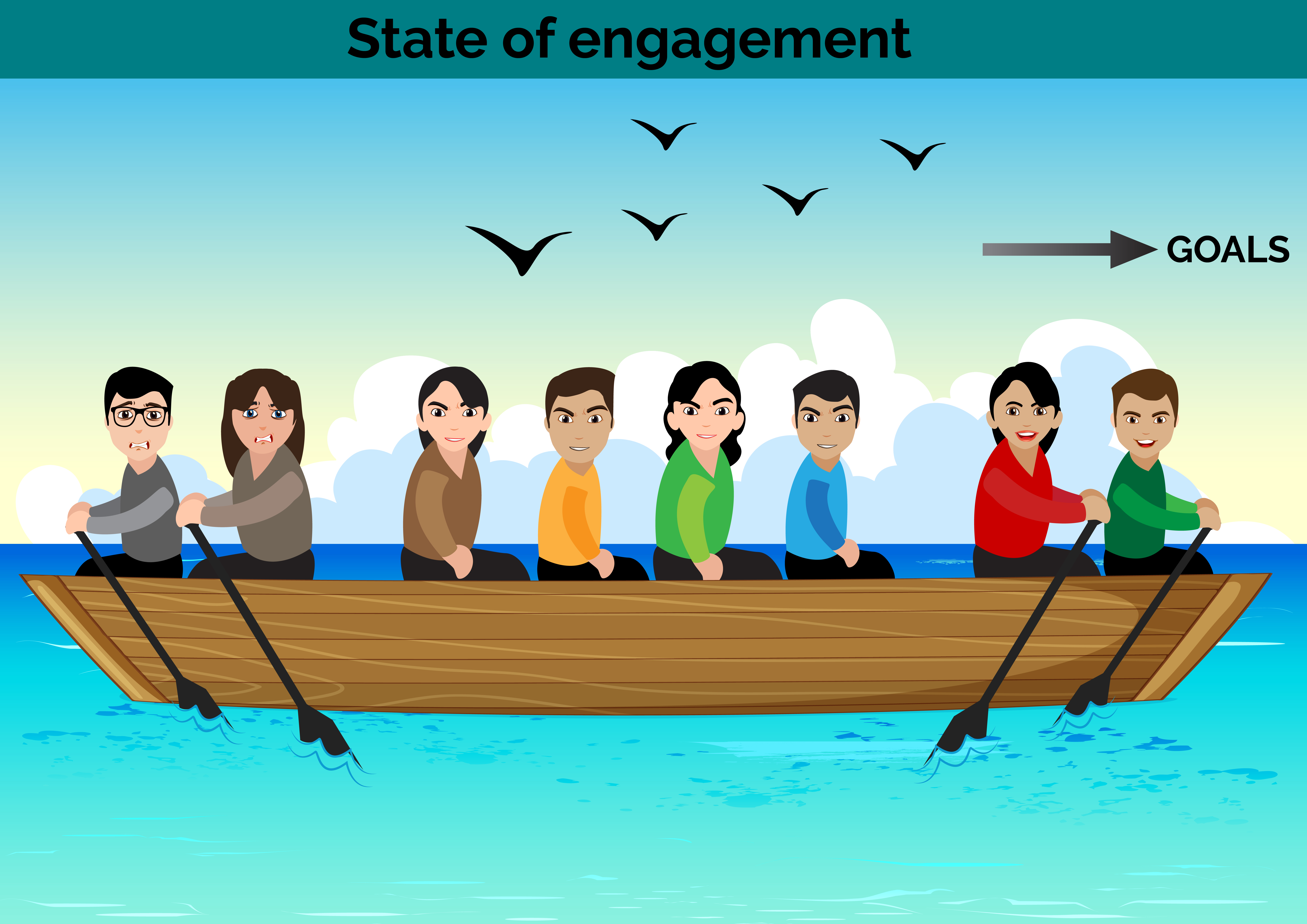[series_meta]
Employee engagement is in a bad state worldwide. We discussed the causes of this in a previous article in this series. We also discussed how to build an environment for engagement. This article zooms in on geographical differences in the state of engagement, especially my home country The Netherlands.
This article is part of a series
[series_post_list_box]
What can you expect from this article?
- The facts on employee engagement in The Netherlands
- An exploration of potential causes
The hard facts on employee engagement
The state of engagement worldwide
Only 13% of the employees worldwide are engaged, according to Gallup’s 2011/2012 State of the global workplace study1. 63% of the employees are not engaged, and a further 24% of the employees are even actively disengaged.
%
engaged
%
Not engaged
%
Actively disengaged
The state of engagement in The Netherlands
It is interesting to note that, although engagement is low worldwide, there are considerable geographical differences. In North America and Canada, engagement is considerably higher than in Western Europe: 29% vs 14%. My home country, The Netherlands fares even less favorable: Just 9% percent of the Dutch employees is engaged! At first glance that was surprising as the Dutch work culture seems to be a lot less hierarchal compared to the American for example. What’s going on here? What stands out is the high percentage of not engaged Dutch employees vs a relatively small number of actively disengaged employees: 80% and 11% respectively. In North America only 54% are not engaged, but 18% are actively disengaged. So it seems most Dutch employees don’t care that much, either in a positive or negative way. I wonder why.
%
Engaged
%
Not engaged
%
Actively Disengaged
What could cause this?
One cause I can think of is the Calvinistic tradition in The Netherlands that seems to favor the average: work hard but don’t stand out of the crowd too much.
The Dutch welfare state might also be part of the cause. High standard unemployment benefits and health-care system ensure a safety net that might just not stimulate entrepreneurship and intrapreneurship as much as in North America. The feeling of being taken care of by the government might not spur employees to great involvement. I’m sure the left-wing political parties in The Netherlands will disagree, but as an enthusiastic believer in Systems Thinking, I well know the relation between cause and effect is often very surprising if we only take the time to look closer.
And then there is the infamous Dutch ‘polder model’: the inclination to reach consensus on almost anything which usually leads to a weak compromise acceptable for all, but not very motivating for any. Maybe this helps explain the enormous percentage of people that just do not seem to care that much.
A call to action
Whatever the cause, I am shocked by the numbers. And I firmly believe managers, business leaders, consultants, politicians, union representatives, and of course employees alike share a responsibility to build better, more motivating, workplaces, that nourish people’s universal motivators of autonomy, competence, and relatedness.
I guess most of us have experienced the moment where you drove to the nearest Staples to buy some hard needed office supplies because the amounts of forms, time and energy involved in following the correct procedures was just unmotivating too much.
Let’s all work together to systematically break down every barrier in our workplaces that stands in the way of people just doing the right things and making the right choices, not because someone tells them to, but because they choose to. Because we helped them align their personal goals and motivations with those of the organization as a whole.
Follow this article
You can choose to follow this article in which case you will be notified when there there are updates of the article. You can also choose to follow all articles of this category. You will then be notified if a new article is added in this category.
Bibliography
List of notes and sources we reference from.
Notes
- Worldwide, 13% of Employees Are Engaged at Work, https://news.gallup.com/poll/165269/worldwide-employees-engaged-work.asp






